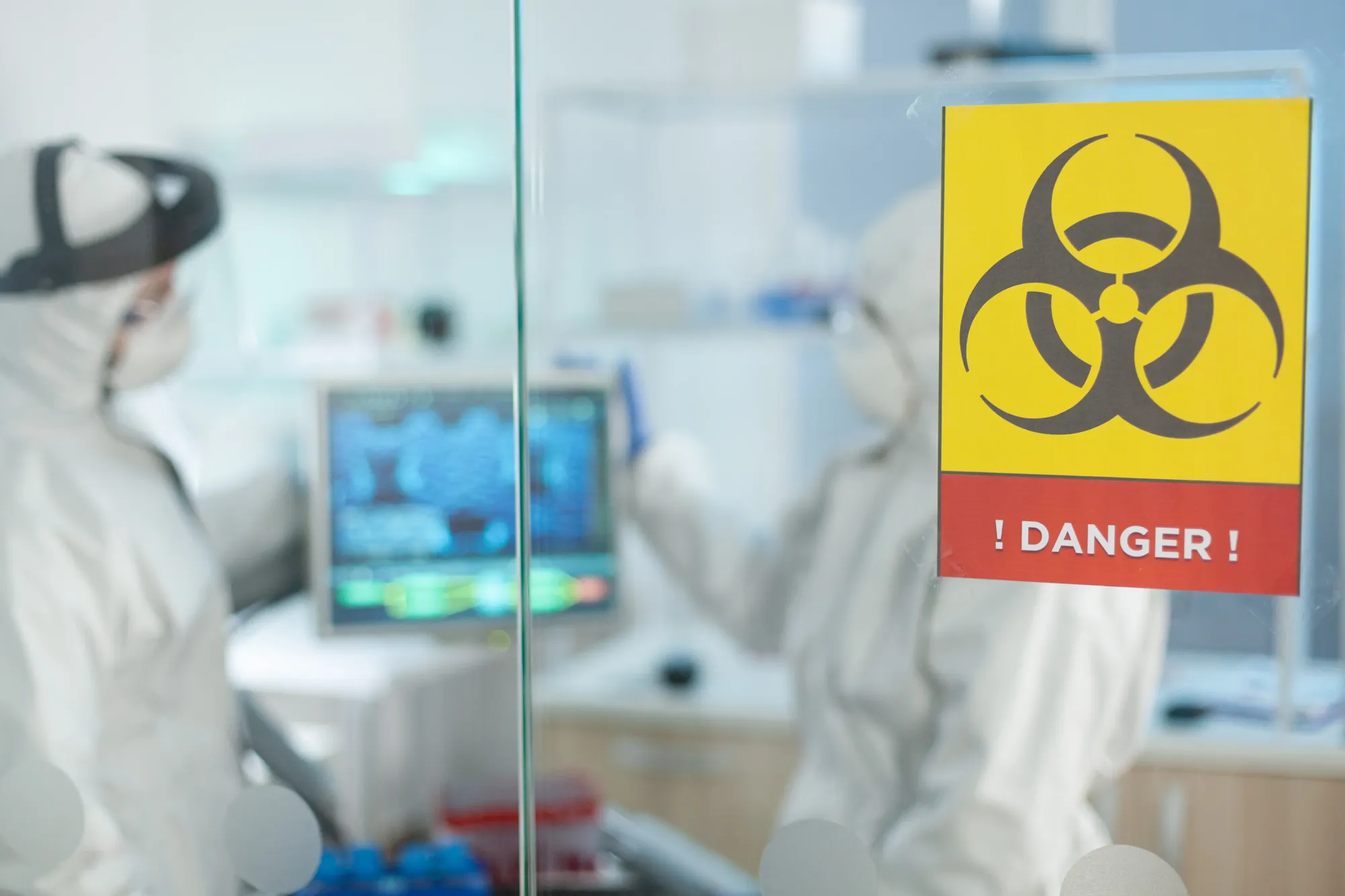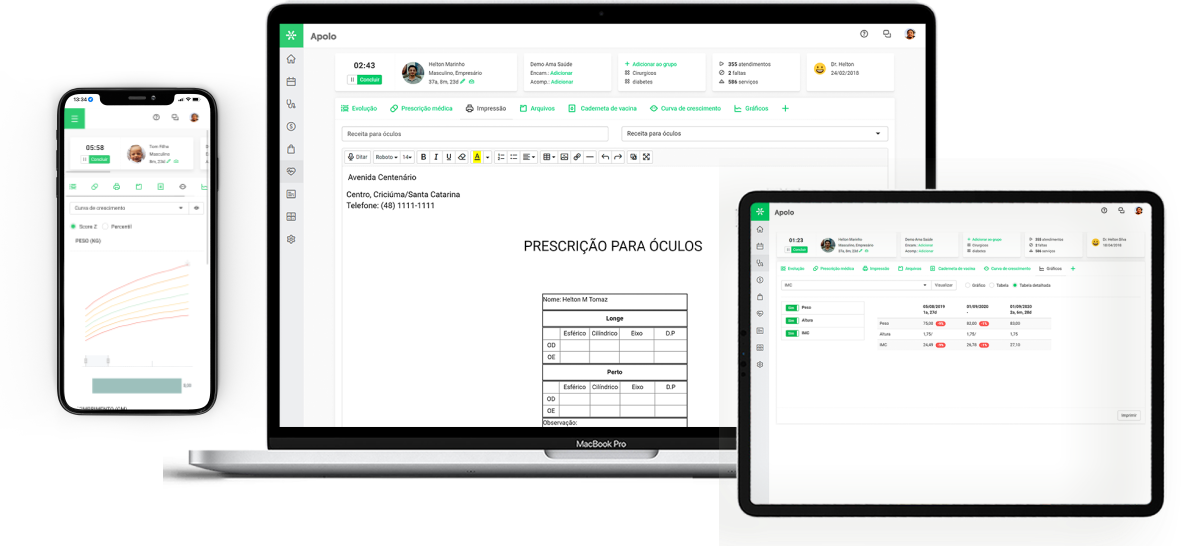
Occupational risks in medical practice, especially in clinics, are essential elements to be understood and managed to ensure a safe and efficient working environment. Defined as situations or conditions that can harm the health of healthcare professionals, occupational risks encompass a variety of factors present in the daily routine of medical clinics. From exposure to biological agents to ergonomic risks, it is crucial to recognize and assess these hazards to implement effective preventive measures.
Before we proceed, we'd like to know: Are you familiar with Ninsaúde Clinic? The Ninsaúde Clinic medical software features a flexible and comprehensive schedule, a customized electronic medical record for each specialty with legal validity, teleconsultation, financial control, insurance billing, and much more. Schedule a demonstration or try Ninsaúde Clinic now!
The relevance of occupational risks in medical practice goes beyond mere compliance with regulations. In a clinical environment, the safety of professionals is directly proportional to the quality of patient care provided. For instance, exposure to pathogens can result in occupational diseases, compromising the professional's ability to provide adequate care. Moreover, poorly managed ergonomic risks can lead to musculoskeletal problems, affecting not only the physician's health but also their ability to assist efficiently.
Types of Risks Present in Medical Clinics
Biological Risk: This risk involves exposure to biological agents, such as viruses and bacteria. Measures such as proper use of personal protective equipment (PPE) and rigorous hygiene practices are essential to protect healthcare professionals.
Chemical Risk: Identified by the color yellow, this risk is associated with the handling of hazardous substances during medical procedures. Specific training, efficient ventilation systems, and emergency protocols are essential to avoid health impacts.
Ergonomic Risk: This type of risk refers to the physical conditions of professionals, resulting from long hours and repetitive movements. Ergonomic practices, regular breaks, and investments in suitable furniture are essential preventive measures.
Accident Risk: This risk covers unexpected incidents, such as falls and impacts. Proper signage, constant training, and safety measures are crucial to prevent accidents.
Physical Risk: This risk involves physical elements such as noise, temperature, and lighting. Proper maintenance of these factors creates a safe environment, promoting the well-being of everyone.

Colors Associated with Risks
Green Color:
- Definition: The green color code is associated with physical risks in the workplace
- Examples: Excessive noise, vibrations, ionizing or non-ionizing radiations, extreme temperatures, and abnormal pressures, among others.
- Preventive Measures: Use of Personal Protective Equipment (PPE), adequate machine isolation, and control of exposure to heat or cold, among other specific measures.
Red Color:
- Definition: The red color is associated with chemical risks related to toxic, corrosive, flammable, or chemical contaminant substances.
- Examples: Exposure to harmful chemicals, toxic gases, corrosive liquids, and chemical dust, among others.
- Preventive Measures: Use of appropriate PPE, safe storage of chemical substances, adequate ventilation, and training on safe handling, among other practices.
Brown Color:
- Definition: The brown color is related to biological risks, such as exposure to pathogenic microorganisms, viruses, bacteria, and other biological agents.
- Examples: Contact with blood, bodily fluids, handling of biological materials, exposure to infectious agents, among others.
- Preventive Measures: Use of specific PPE, proper hygiene practices, vaccination when applicable, safe isolation of biological materials, among other precautions.
Yellow Color:
- Definition: The yellow color is associated with ergonomic risks related to adapting work to the physical and psychological characteristics of the worker.
- Examples: Inadequate postures, excessive physical effort, unsuitable furniture, intense work pace, among others.
- Preventive Measures: Adaptation of the work environment, ergonomic training, use of adjustable furniture, and adequate breaks, among other practices aiming for better ergonomics.
Blue Color:
- Definition: The blue color is used to indicate accident or mechanical risks associated with machines, equipment, and processes that can cause physical injuries.
- Examples: Operation of dangerous machines, risk of falls, sharp objects, crushing, among others.
- Preventive Measures: Safety training, regular machine maintenance, proper signage, use of specific PPE, and protective barriers, among other measures to prevent mechanical accidents.

Impacts of Occupational Risks on Health and Productivity
Occupational risks in the medical environment are not just challenges to be faced; they are shadows that can resonate deeply in the physical and mental health of healthcare professionals. Exposure to biological agents, repetitive movements, and stressful situations can result in physical consequences such as musculoskeletal injuries and mental health problems, including stress and burnout. These impacts extend beyond professional lives, crossing the borders of the overall health of individuals dedicated to caring for others.
These ramifications reach beyond the individual, directly influencing the quality of care provided to patients. Professionals burdened by occupational risks may experience a decrease in productivity and efficiency, thus affecting the delivery of exceptional care. Fatigue and constant pressures can create an environment prone to errors, negatively impacting the patient's experience and, ultimately, the effectiveness of treatment.
Recognizing and mitigating these impacts is a shared responsibility among healthcare institutions, managers, and the professionals themselves. By investing in preventive measures such as mental health training, ergonomic practices, and promoting a healthy work environment, it is possible not only to preserve the health of professionals but also to cultivate an environment conducive to excellence in patient care. In this intersection between the well-being of professionals and the quality of care, lies the key to building a truly resilient and compassionate healthcare environment.

Preventive Measures and Control of Risks
In the challenging universe of medical clinics, the safety of professionals is a non-negotiable priority, and preventive measures and risk control play a crucial role in this mission. Personal Protective Equipment (PPE) emerges as a true guardians, providing a physical barrier between healthcare professionals and the inherent risks of the clinical environment. From masks to gloves and aprons, the proper use of these PPEs not only protects professionals from occupational diseases but also ensures the continuity of safe and effective patient care.
Beyond PPEs, biosafety protocols constitute a robust line of defense. These comprehensive guidelines outline specific practices to minimize exposure to biological, chemical, and physical agents. From the proper handling of materials to the adequate disinfection of equipment, biosafety protocols offer a structured guide to create safer clinical environments, benefiting both professionals and patients.
However, the effectiveness of these measures depends intrinsically on the awareness and competence of healthcare professionals. Here, training and continuous education come into play, a key piece in the occupational safety puzzle. Keeping professionals updated on best practices, new technologies, and the latest medical advances not only enhances the quality of care but also strengthens the culture of safety in clinics.
In summary, the triad formed by PPEs, biosafety protocols, and continuous education shapes a robust shield against occupational challenges. Investing in these pillars is not just a preventive measure; it is an unwavering commitment to health and safety, ensuring that healthcare professionals are protected while continuing to provide exceptional care.
Advantages of Ninsaúde Software for Clinics
Operational Efficiency:
- Automation of processes streamlines service and management.
- Reduction of manual tasks, optimizing the team's time.
Security and Compliance:
- A robust system ensuring the confidentiality of patient data.
- Compliance with health sector norms and regulations.

Ease of Access and Mobility:
- The cloud-based platform allows remote access to data.
- Mobile application for real-time management, offering mobility to professionals.
Customer Service:
- Specialized technical support to quickly resolve issues.
- Regular updates to keep the software aligned with market needs.
Customization and Scalability:
- Adaptation to the specific needs of the clinic.
- Capacity for expansion as the institution grows.
Risks in Different Medical Specialties
Each medical specialty comes with a unique set of challenges and risks, and understanding these nuances is essential to ensure the safety of healthcare professionals. In surgery, where precision and focus are imperative, risks related to postoperative infections and exposure to pathogens require special attention. Customized recommendations include strict sterilization protocols and enhanced use of Personal Protective Equipment (PPE).
In other specialties, such as cardiology or oncology, where risks may be related to invasive procedures and exposure to chemicals, personalized recommendations include the implementation of advanced monitoring technologies and the use of hazardous substance handling practices. Ongoing awareness and continuous education also play a vital role in all specialties, empowering professionals to face the specific challenges of each field.
In summary, risk management in different medical specialties requires a personalized and sensitive approach. By understanding the specificities of each area, it is possible to implement tailored recommendations, ensuring that the safety of professionals and the quality of care remain unwavering priorities in all corners of medicine.

Challenges and Trends in Occupational Risk Management in Medical Clinics
Occupational risk management in medical clinics is not just a task; it is a journey of constant evolution. Over the years, we have witnessed a remarkable transformation in occupational safety practices in the healthcare sector. What was once predominantly reactive is now shaping into a proactive approach, focused on prevention and creating safer work environments.
The evolution of these practices is largely driven by the adoption of innovative technologies. In the medical landscape, where risks are inherent, technology emerges as a crucial ally. From the implementation of advanced monitoring systems to the introduction of intelligent protection devices, medical clinics are exploring innovative ways to minimize risks. State-of-the-art sensors, for example, can detect potential threats, providing early alerts and enabling quick responses to ensure the safety of healthcare professionals.
Furthermore, the incorporation of technology-driven ergonomic practices aims to mitigate occupational risks associated with repetitive movements and improper postures. Automatically adjustable desks and ergonomically designed chairs are tangible examples of this revolution in the medical workplace.
However, as we move toward a more technologically sophisticated era, the humanization of these practices remains fundamental. Regular training and continuous awareness of healthcare professionals are key elements to ensure that these innovations seamlessly integrate into daily routines, creating an environment where safety is an intrinsic part of patient care. In short, occupational risk management in medical clinics is traversing an exciting and necessary path, where the combination of evolution, technological innovation, and a focus on humanization continues to shape the future of safety in the healthcare sector.

Conclusion
In the day-to-day operations of medical clinics, it is important to recognize the challenges that are always present in the care environment. Whether dealing with biological agents, repetitive movements, or stressful situations, it is crucial to be aware of these obstacles to make medical practice safer. This issue cannot be underestimated, as it affects not only the health of professionals but also the quality of patient care.
Keeping an eye on these issues goes beyond simple precautions; it is a commitment to the well-being of everyone involved. Adopting preventive measures, such as the use of Personal Protective Equipment (PPE) and the promotion of ergonomic practices and mental health programs, is essential to create healthy and sustainable work environments. In this way, we can ensure quality care and a safer working environment for everyone.
Did you like the tips? Keep following the blog to stay informed about more content like this. Are you a healthcare professional but still not using management software? Get to know the Ninsaúde Clinic system.

